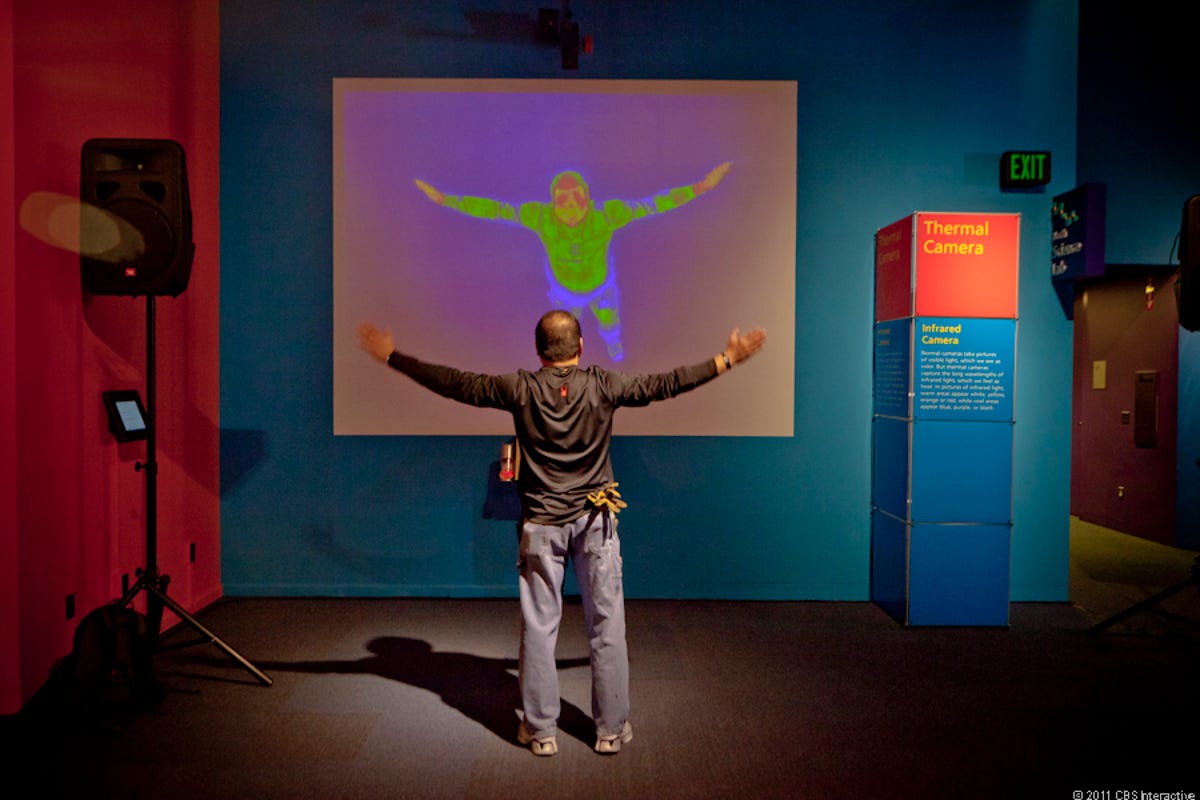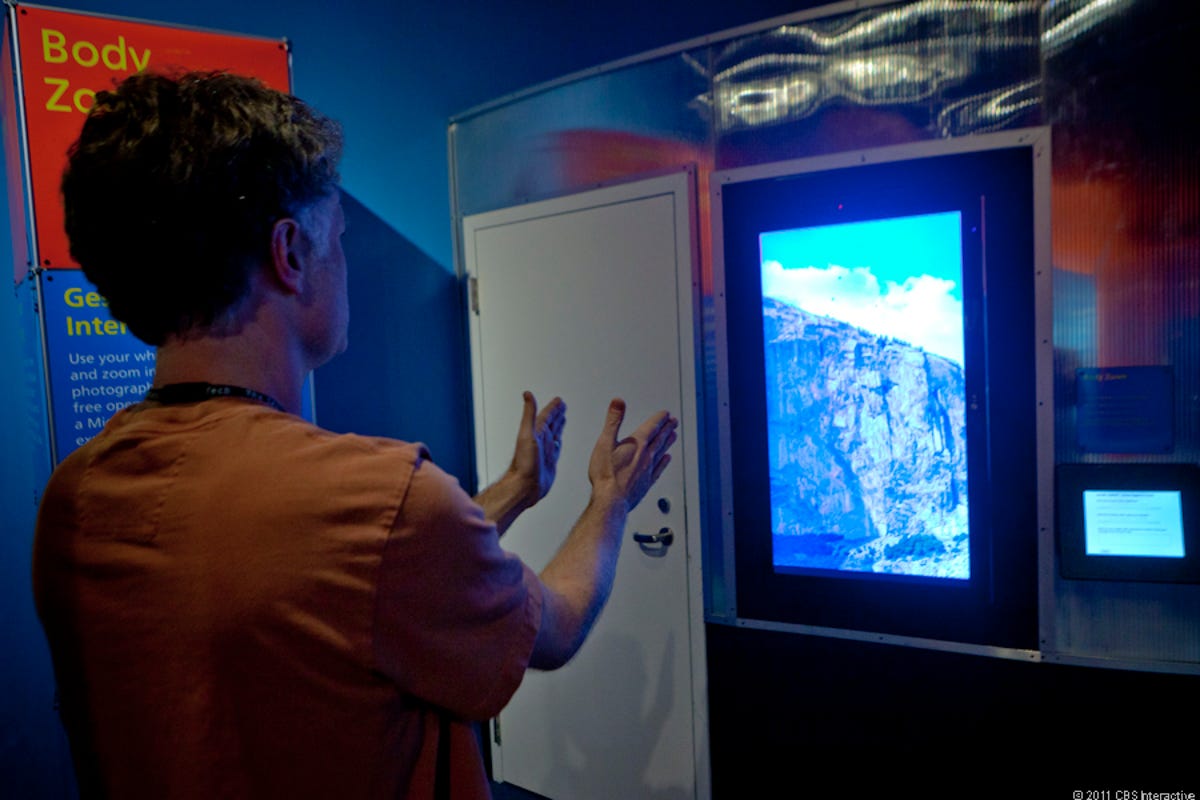Future tech exhibit plugs museum interactivity (photos)
Interactive designers, researchers, and developers look to the future of museum interactivity at a kickoff event this week for new gallery of prototypes at The Tech Museum in San Jose, Calif.

Captured on thermal film
The Tech Museum in San Jose, Calif., this week opened a cutting-edge gallery focused on prototypes relating to the future of museum interactivity.
Prototype tech on display in the museum's Tech Test Zone includes designs from corporations, academic labs, and professional designers.
The exhibit opening was held in conjunction with a conference on interactivity for museum professionals that explored how museums and other public-space designers can use such technologies to enhance visitor learning and experience.
Here, a museum visitor interacts with a thermal camera that captures the long wavelengths of infrared light. Warm areas appear white, yellow, or red, while cool areas appear blur, purple, or black.

Gestural interface
Pressure sensitive surface
Sensing direct pressure, the program translates the sensitive foam's information into a digital drawing.
Digital Foam was developed by Ross Smith, of Australia's University of Adelaide. He researches simple techniques for digital 3D design and the 1-to-1 relationship between the physical device and digital forms.
Speaking this week's conference, Smith said the reproduction of finger manipulation into the virtual world has many potential uses. One use he's exploring is in medical-training mannequins that can teach techniques by tracking body manipulation, pressure, and location.
Reverse the foam, he added, and it could have potential uses as a means of touch-sensory input for robots.
Tech Test Zone feedback
Museum guests get to participate in the engineering design process and the developers can gather valuable user-testing data on their work.
Sound Circles
Paper chase
This augmented reality exhibit uses a camera to identify the shaped drawn on the paper, and then creates a digital racetrack based on the shape.
Pixel eye tracking
Using open-source code, one camera looks inward, tracking the users pupil, while a second camera looks outward.
These two images are combined and display a live view highlighting where the viewer is looking within the image.
Co-creator Matt Miller says the Pixel project is potentially a way to further engage museum visitors in the future.

